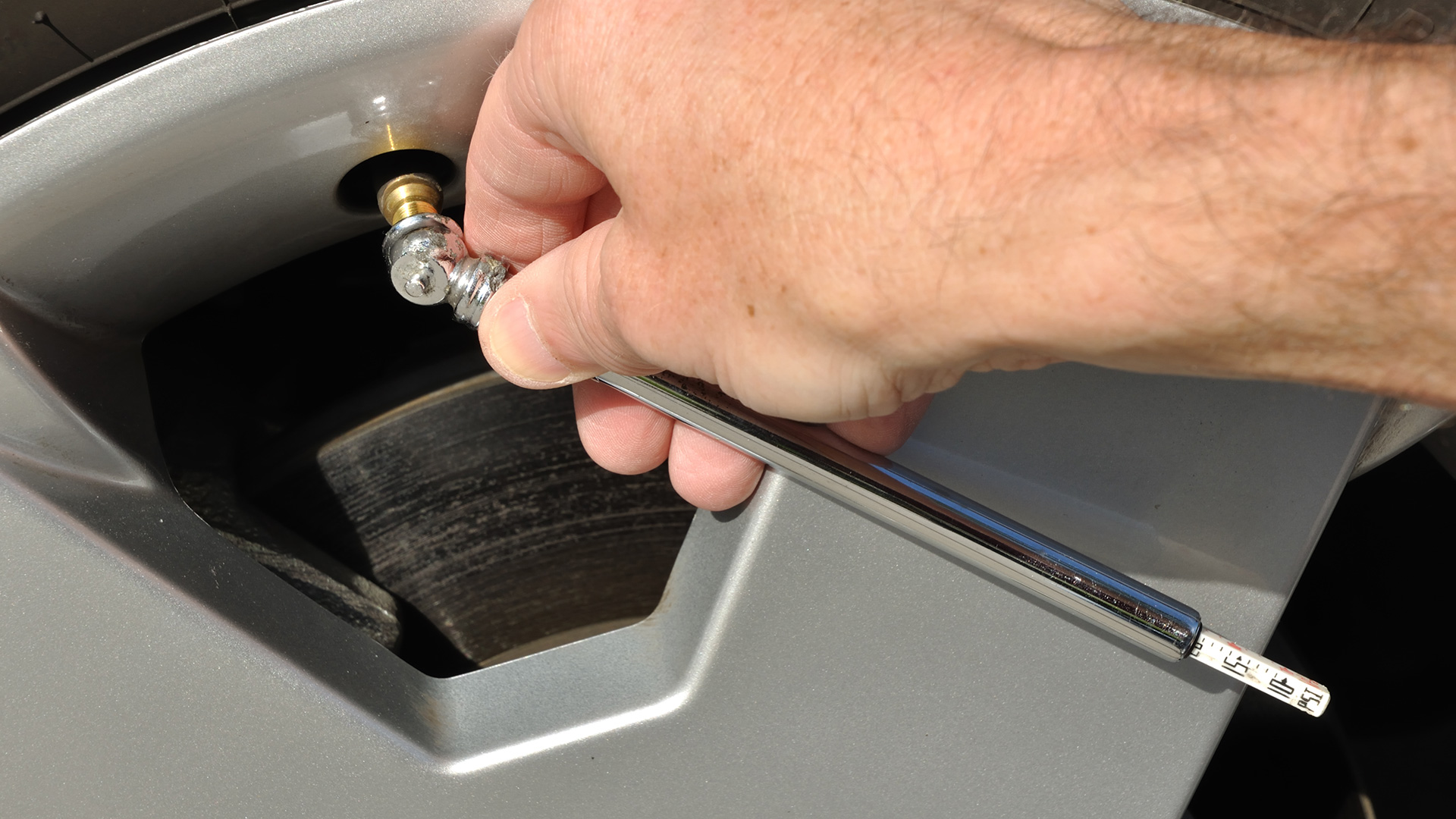You’re probably thinking, “how can a tire pressure gauge save me money?” Simple. When you’re able to accurately check your tire pressure whenever you want, you’ll know when your tires are underinflated or overinflated. You see, driving on underinflated or overinflated tires negatively impacts your fuel economy and causes premature wear on your tires. That means you’re spending more at the pump and buying new tires sooner than you should. Even if you own an electrified vehicle, proper tire pressure is important since it impacts your vehicle’s driving range.
“But shouldn’t my tire pressure monitoring system (TPMS) be good enough?” Not really. TPMS is designed to notify you when your tires are below a certain threshold, typically 25% below the recommended tire pressure. That’s quite a bit of loss at that point, which means you’ve been sacrificing MPG and prematurely wearing out your tires. Our recommendation is to rely on your TPMS to warn you when you have a fast leak or a flat tire, but not when you’re missing a few PSI.
Now, if your vehicle is equipped with a system that displays your actual tire pressure, you can probably live without a tire pressure gauge. We recommend to keep an eye on those readings and properly inflating your tires when necessary. If you’re a track enthusiast, you’ll probably want to own a tire pressure gauge, especially one with a bleeder valve.
Below, you’ll find our recommendations for the best tire pressure gauges money can buy. Following our recommendations are some frequently asked questions about tire pressure, and information about proper tire inflation and how it can impact your vehicle. We also recommend owning a portable tire inflator, so you can inflate your tires at home.
1. Best digital: AstroAI digital tire pressure gauge
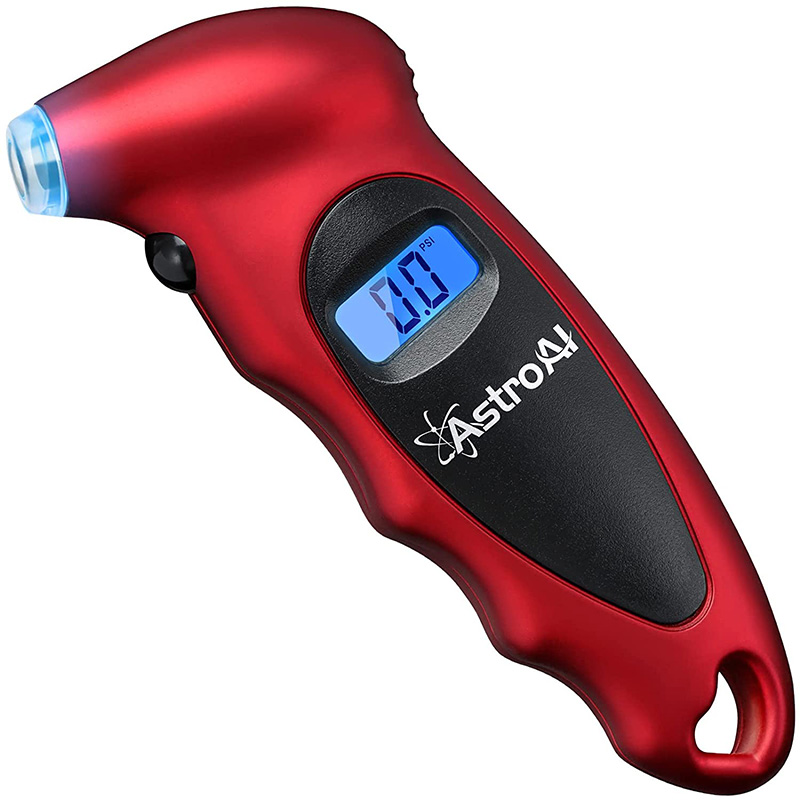
Pros
- Extremely easy to use and read
- Accurate digital calibration
- Lighted nozzle
Cons
- Plastic construction feels cheap
- Requires batteries
For the average car owner, digital tire pressure gauges are probably the easiest to use and to read. Some will argue that they’re not as accurate as analog dial gauges, while others believe digital calibration is more accurate. We fall in the category of the latter, assuming the digital calibration was done by a reputable company. Based on our research, AstroAI’s digital tire pressure gauge is accurate, affordable, and dependable, but it isn’t without some flaws. For one, its plastic construction feels a bit cheap and isn’t very durable, while some owners have received faulty units.
This gauge is equipped with a backlit LCD display that measures tire pressure in four different units: PSI, BAR, kg/cm², and KPA. It also has a lighted nozzle to help you out at night, but don’t expect it to be really bright. It’s also available in a variety of colors to match your car, if you want.
The biggest issue with digital tire pressure gauges is that they require batteries. If that sounds inconvenient to you, we recommend getting an analog gauge instead.
2. Best analog: JACO ElitePro 100 PSI tire pressure gauge
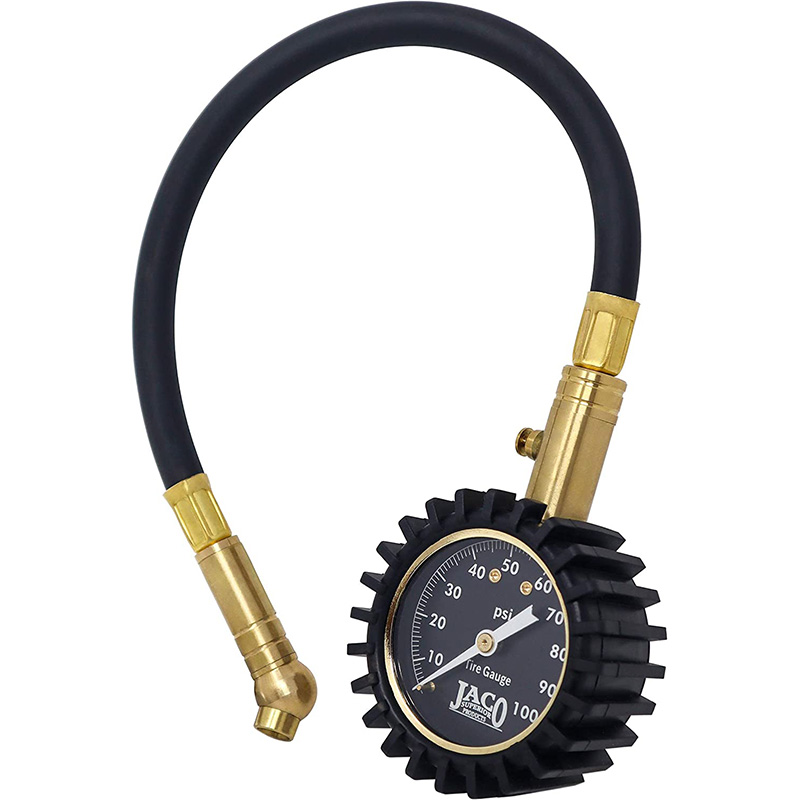
Pros
- Well-known brand
- Quality construction
- Great customer service
Cons
- Although uncommon, some users have received faulty units
- Some may find it bulky
I’m personally a huge fan of the brand JACO, because I’ve had a great experience dealing with its customer service in the past. It’s a well-known brand in the off-road market and this gauge is my pick for the best analog gauge. It measures up to 100 PSI, which is more than enough for most car owners. The company does offer a gauge that reads up to 60 PSI, but there isn’t really a price difference — it’s there if you prefer it.
JACO’s analog tire pressure gauge is performance tested, certified, and calibrated to be accurate within ANSI standards, which is plus or minus 1.5%. It has a durable and rugged design with a shock-resistant protective guard. The company’s HybridFlex leak-proof air hose is flexible and makes the gauge easy to use, along with the 360-degree swivel chuck. The gauge itself measures 2″ in diameter and can glow in the dark. Each measurement is locked in place until the reset button on the neck is pressed.
As a quality analog tire pressure gauge, this unit also has a built-in air bleeder valve so you can reduce tire pressure on overinflated tires. I don’t hesitate to recommend JACO’s products because they’re backed by a 100% lifetime warranty and the company typically honors it with no fuss.
3. Best on a budget: VONDIOR tire pressure gauge
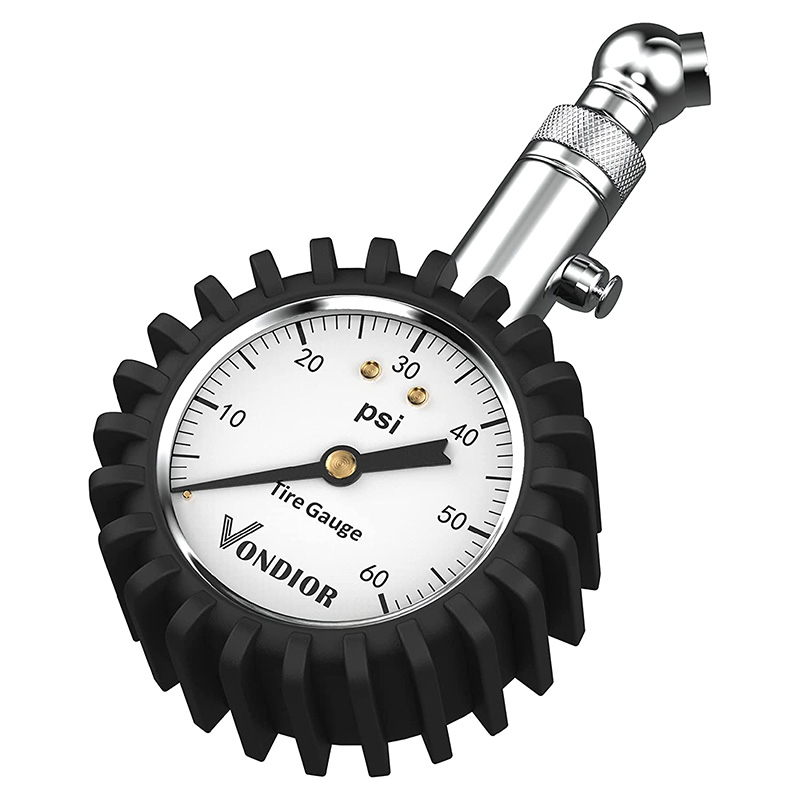
Pros
- Easy to read
- Protective rubber shield
- Often on sale
Cons
- Bleeder valve releases air very slowly
- Some quality control issues
If you’re shopping on a budget, VONDIOR’s tire pressure gauge is our recommendation. It’s often on sale and since it’s an analog dial gauge, you don’t have to worry about batteries. Now given its price, it’s little surprise there are some quality control issues and some buyers have received faulty units. Get a good one however, and it’ll be a reliable and dependable gauge that has been calibrated to be plus or minus 1% accurate. Overall, its design is very similar to JACO’s tire pressure gauge, although some owners say the bleeder valve releases air very slowly.
The gauge is available in either black or white with a glow-in-the-dark 2″ dial. It reads up to 60 PSI which should be sufficient for the majority of car owners. Attached is a 2.25″ stem with a 360-degree swivel chuck at the end to make it easier to attach to your valve stem.
4. Best stick/pencil: Valve-Loc tire pressure gauge
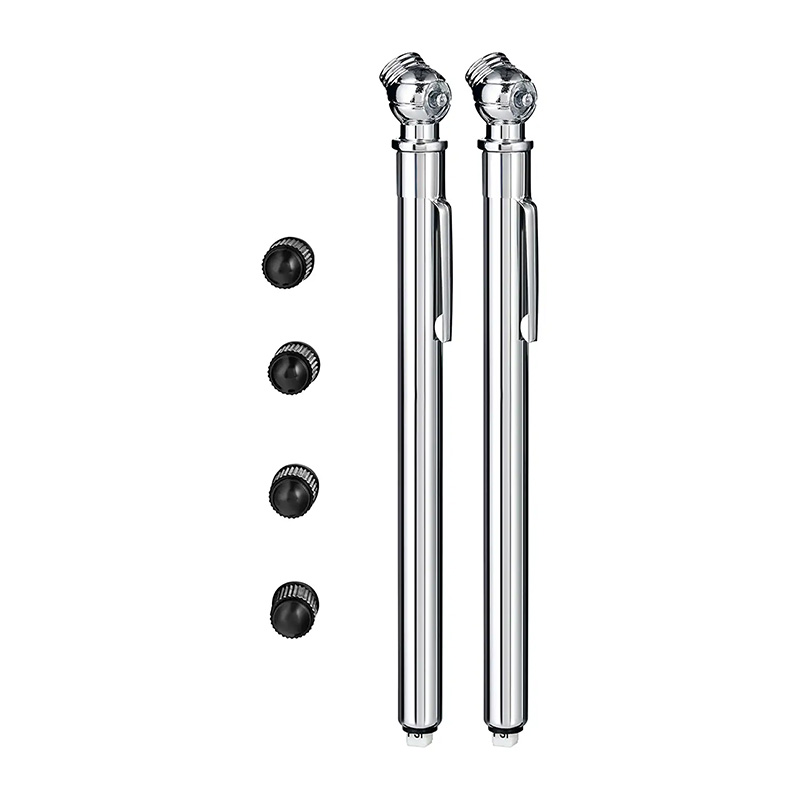
Pros
- Affordable
- Reliable
Cons
- Not as easy to read as other tire pressure gauges
- Extremely basic
This is more than likely the tire pressure gauge your parents used and it’s called a stick- or pencil-type gauge. Its design is really basic, making it the most affordable type of tire pressure gauge available. So much so that you can get two gauges for less than the price of an analog dial gauge. Some car owners prefer this style gauge because they can keep it in their car’s glove box without taking up too much space and always have it available.
It’s worth mentioning that when compared to dial and digital tire pressure gauges, these pencil-type gauges can be frustrating to read. When you use these gauges, a stick pops out to show your tire pressure, and depending on the angle, it can be difficult to see the measurement. Realistically it’s a minor inconvenience, but it’s worth mentioning.
As for our recommendation, you’ll get a pair of tire pressure gauges that can read up to 50 PSI, each constructed with a chrome metal head and stainless steel body. Valve-Loc also includes four valve stem caps, in case you need to replace any on your wheels.
Why are underinflated tires bad for my car?
When your tires are underinflated, you’re not getting optimal performance. The sidewalls are flexing more, which affects your handling, and you’ll get less traction and grip. As a result, your fuel economy takes a hit and your tires wear out quicker. That means extra money spent at the gas station and replacing your tires sooner than expected. Perhaps most importantly, driving on underinflated tires increases the risk of a blowout.
Why are overinflated tires bad for my car?
Tires with more pressure than what’s recommended will cause your vehicle to have a harsher ride, as you’ll feel all the bumps on the road. They can also be more easily damaged driving on rough roads or hitting potholes. Premature wear also occurs and overinflated tires are more at risk of a blowout.
What’s the right tire pressure for my car?
To find the recommended tire pressure for your car, start by looking at your driver’s side door jamb. Most modern vehicles will have a sticker affixed to the door jamb that shows the recommended tire pressure. Some vehicles will have it separated by front and rear tires, so pay attention if that’s the case. If you can’t find the label on your driver’s side door jamb, check your gas door or glove box. If all else fails, refer to the owner’s manual.
